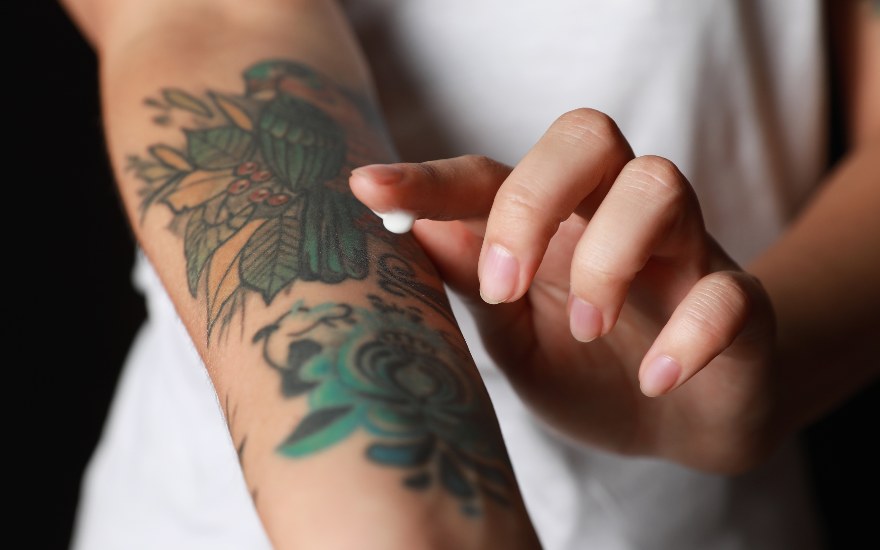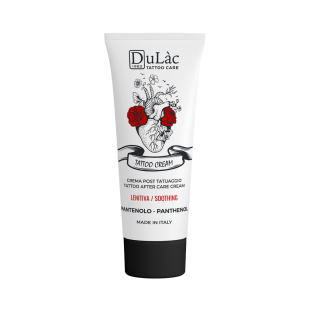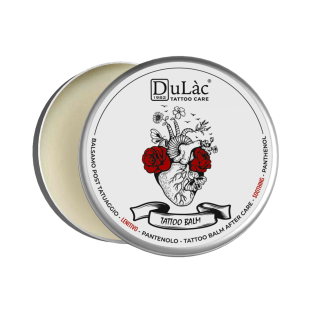What cream should we put on tattoos and how should we choose the right one? Here is the answer.
Are you about to get a new tattoo, or your first one ever, and would like to take the best care of it in order to facilitate the healing process of your skin? Then you are probably wondering which cream to put on your tattoos and how to choose the best one among the many available on the market.
Getting information in good time and avoiding making a hasty choice is a really good idea: you are giving yourself the opportunity to use the ideal product for your skin and to buy the right cream straight away, without having to change it in the process.
Today we want to resolve all your doubts and help you in this decision. We will talk about ingredients, density and, more generally, the requirements that a good cream for tattoos should have, so that you can confidently choose the one that best suits your needs.
The characteristics of a good post-tattoo cream
Using the right product for a newly tattooed skin is essential to preserve the colour of the ink and the integrity of the lines, so as to avoid discoloured parts of the tattoo and achieve a perfect final result.
Although the work of the tattoo artist is indeed essential, extreme attention must be paid to the skin care products to be used (and to how we use them) so as to prevent the risk of nullifying the efforts of the professional artist.
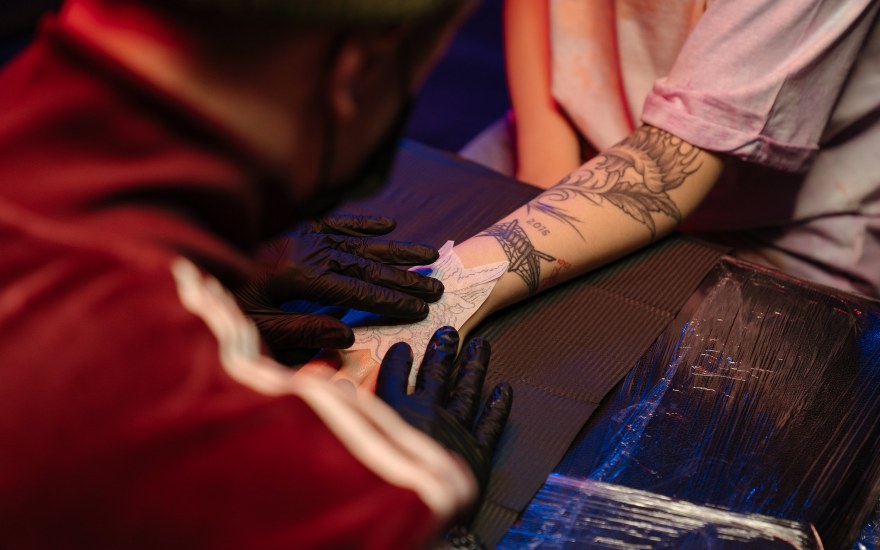
But what are the peculiarities of a good cream to use on tattoos?
Here are the main characteristics you should focus on:
- Ingredients: A good tattoo cream is rich in moisturising, soothing and protective agents (preferably of plant origin, as these provide nourishment and act as a barrier without hindering natural perspiration). A key component among these is panthenol, a regenerating, moisturising and elasticising ingredient for the skin.
- Density of the product: The ideal consistency of creams and butters for new tattoos is not too pasty. The product must spread easily without causing friction.
Another no less important feature is that the product you decide to use should be specific for tattoo care, in that it must be purposely formulated to best protect the affected area while avoiding infections and dryness.
Never use face creams, body creams, pure shea butter or other non-dedicated products, because you could compromise the final result.
In order to help you make an informed choice regarding which cream to use for tattoos, let’s now focus on the following points in more details.
The importance of active ingredients for tattoo healing
As mentioned above, tattoo products should always contain moisturising, soothing and, above all, barrier ingredients. In the healing phase, in fact, it is very important that the skin is protected from external agents and that it loses very little liquid, remaining well nourished and elastic.
Caution: never allow freshly tattooed skin to dry out. The final result could be irreparably affected (unless you have it re-tattoed).
You can check the cream formulations in the list of cosmetic ingredients (INCI), which is mandatory on the label.
This list is ordered according to the percentage of the substance present in the product: starting with the component present in the largest quantity down to the ingredient present in the smallest one.
But which ones should be preferred?
Here are a few examples:
- panthenol, regenerating and extremely moisturising. It should never be missing in creams for tattoos;
- shea butter: forms a breathable barrier on the tattoo, nourishes and provides elasticity to the skin;
- vegetable oils, such as olive oil and wheat germ oil: deeply moisturise and keep the skin well hydrated for a long time;
- aloe vera, calendula or other natural soothing ingredients: exceptional for relieving reddened and sensitive skin.
It is also key to choose substances able to prevent moisture loss as much as possible and form a protective layer on the affected area.
These components do not need to be of vegetable origin - it is very difficult to find a 100% natural cosmetic product, although some creams come very close to this rate; however, it is essential that they perform the above-mentioned action.
Among these, the most suitable for post-tattoo products are beeswax, liquid paraffin and vaseline (although the consistency of the latter is usually not well tolerated by people).
Liquid paraffin: is it really to be avoided in a tattoo ointment?
The reason for the presence of paraffin in many tattoo products is due to the fact that it creates a barrier on the skin, maintains hydration for a long time and prevents the penetration of external agents.
So, if scrolling through the list of ingredients you find a substance indicated as Paraffinum Liquidum, don't worry: it makes perfect sense!
Unless you suffer from an allergy to this ingredient, its presence, especially in small quantities, should not be a problem. Despite being demonised, it is necessary to stick to the facts: dedicated scientific studies have shown that this mineral oil is a lipophilic substance that does not penetrate human skin.
It simply prevents dehydration to the full, which is why it is so common in tattoo care products.
Furthermore, mineral oils are only allowed in cosmetics if they meet the purity specifications and safety requirements set by the European Pharmacopoeia and the EU Cosmetics Regulation EC/1223/2009.
In the light of the above, they must undergo a refining process aimed at eliminating any potentially carcinogenic substance.
Of course, especially to allow the proper transpiration of the skin, occlusive ingredients such as paraffin (i.e. that do not bind to the hydrolipid film of the skin, but form an additional barrier by reducing the evaporation of skin fluids) should be present in low quantities and combined with non-occlusive and potentially natural ingredients.
The consistency of the product, which is so important to obtain an excellent final result, depends on the formulation of the cream and on the right balance between ingredients.
The ideal consistency of a tattoo care cream
During the healing phase the formation of small scabs on the surface of the tattooed area may occur, often accompanied by an itching sensation and the colour of the tattoo being less bright than in previous days.
Such scabs should fall off from the skin by themselves. Tattoo artists recommend drying the tattoo by dabbing it with paper or a clean towel but never by rubbing. Moreover, you should be careful not to peel off the scabs when cleansing the skin and applying the cream.
For this reason, it is preferable to choose a fluid cream that spreads easily and evenly without causing too much friction. Pasty ointments should be avoided, as they generate resistance and can induce premature scab detachment.
Besides, depending on density, ease of spreading and other characteristics, you may prefer a tattoo balm to a cream.
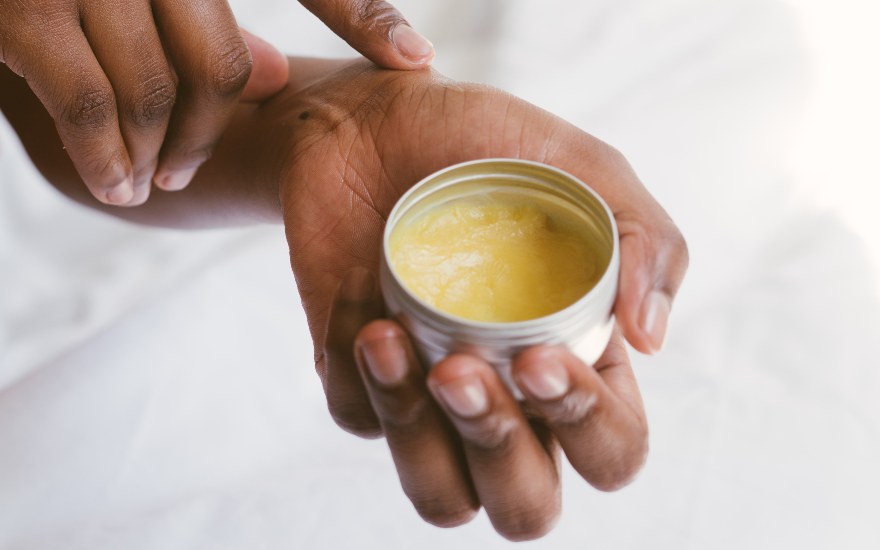
Knowing the texture of a product before using it may be difficult, but not impossible: there are plenty of product reviews online, and often those who have used a cream write a feedback on its fluidity and ease of application.
In conclusion
After getting a tattoo, the care product accompanies you for about two weeks and, more generally, until the skin is completely healed (which usually coincides with the detachment of the last scabs).
The cream, which is to be spread several times a day, must play some key roles such as:
- moisturise for a long time,
- promote perfect skin healing,
- protect the skin from external agents and dehydration by forming a protective barrier,
- relieve the dermis traumatised by needles.
A simple moisturising face or body cream is not enough. Choose a product specifically developed for your newly made tattoo, such as Dulàc Farmaceutici Panthenol tattoo cream, read the reviews and keep in mind what you have read in this article.
You have all the tools to make an informed choice.
